Archaeologists find Ancient Greek tomb filled with gold, silver and bronze
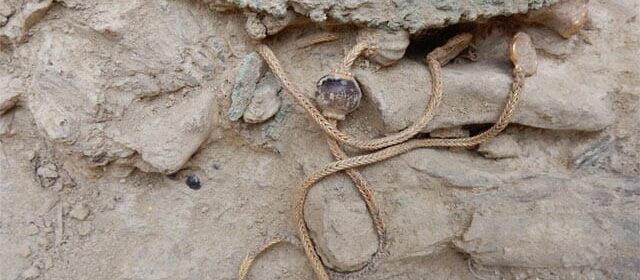
Archaeologists find Ancient Greek tomb filled with gold, silver and bronze
In southwestern Greece, Archaeological excavations a Bronze Age warrior’s tomb filled with more than 3,500 artefacts including jewels, weapons, armour and bronze, silver and gold vessels that shed light on a period of history that has divided experts for years.
The grave was found near the ancient city of Pylos by a research team funded by the University of Cincinnati and led by husband-and-wife archaeologists Jack Davis and Sharon Stocker.
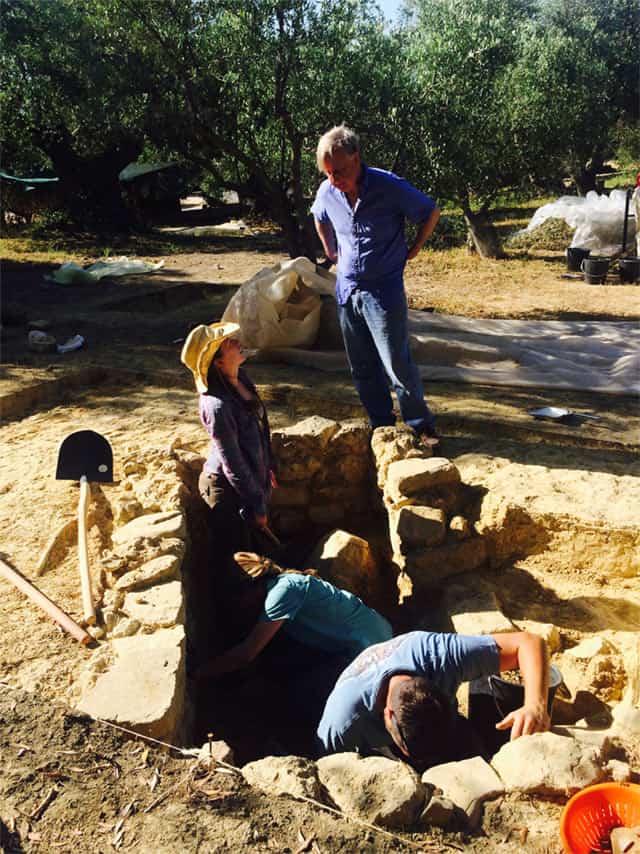
The research team discovered an intact adult male skeleton of an ancient Greek warrior during the initial six-month dig, which began in 2015, and excavated 1,400 items including weapons, jewels, armour and artefacts of silver and gold.
Described as “one of the most exciting discoveries in Greece for decades,” the 30-35-year-old man has been dubbed the “Griffin Warrior” after an ivory plaque depicting the half-lion, half-eagle mythical beast that was found alongside him.
But, it was the huge trove of artefacts found alongside him that left the team stunned. Dr Stocker said in 2015: ”It is truly amazing that no ceramic vessels were included among the grave gifts.
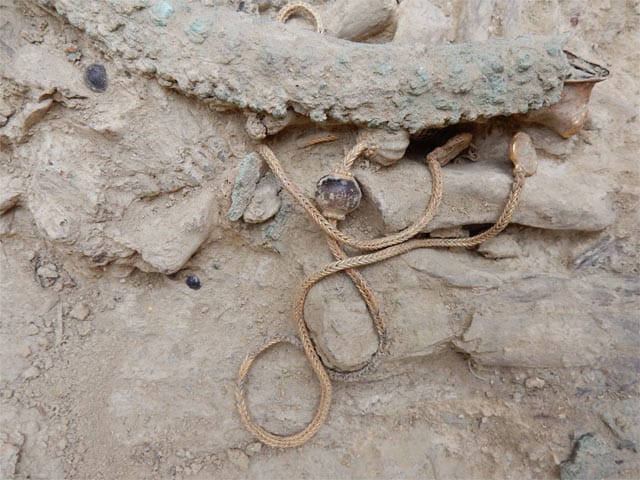
“All the cups, pitchers and basins we found were of metal – bronze, silver and gold. “He clearly could afford to hold regular pots of ceramic in disdain.”
Also found among the treasure was a bronze mirror, six fine-toothed ivory combs and semi-precious stones such as amethyst, agate and jasper – revealing the man took pride in his appearance and was not prepared to compromise on quality.
Gold goblets rested on the remains of his chest and stomach and close to his neck was a beautiful necklace featuring two pendants.
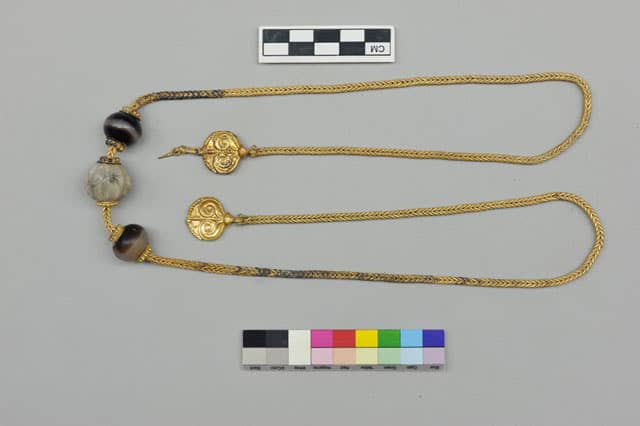
Dr Davis said in 2015: “Whoever he was, he seems to have been celebrated for his trading or fighting in the nearby island of Crete.”
The pair stumbled upon it almost by accident on the first day of a dig at the site of the Palace of Nestor, part of the ancient city of Pylos, which dates back to the Mycenaean era.
The archaeologists also found stone seals decorated with images of Minoan-style human figures vaulting over bulls, as well as goddesses and lions.
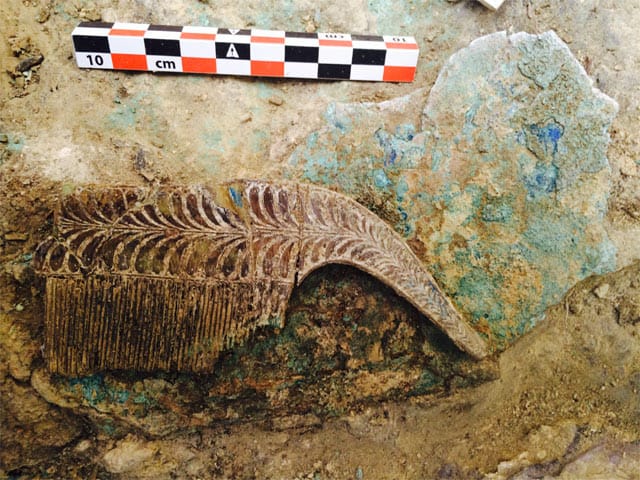
Since 2015, the number of artefacts recovered from the grave has reached over 3,500, including a historically significant Minoan stone called the Pylos Combat Agate and four signet gold rings with detailed images from Minoan mythology.
Archaeologists have long debated the influence of the Minoan civilisation, which began to flourish in Crete around 2500BC on the rise of Mycenaean society 1,000 years later.
Linear B tablets, bull horn symbols, and goddess figurines found at Mycenaean sites like Pylos attest to the impact of Minoan culture.
Based on archaeological evidence of destruction, many scholars believe that the Mycenaeans invaded and conquered Crete around 1450BC. The burial provides vital clues to the origin of Greek civilisation some 3,500 years ago.
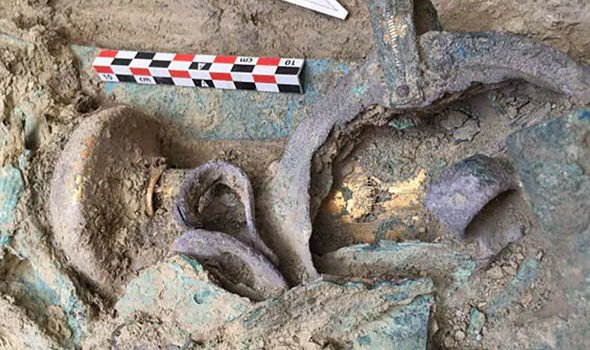
The palaces found at Mycenae, Pylos, and elsewhere on the Greek mainland have a common inspiration – all borrowed heavily from the Minoan civilisation that arose on the large island of Crete, southeast of Pylos.
The warrior’s grave may hold many answers as he died before the palaces began to be built, and his grave is full of artefacts made in Crete.
Director of the Institute for Aegean Prehistory Study Centre for East Crete, Dr Brogan noted: “This is a transformative moment in the Bronze Age.”
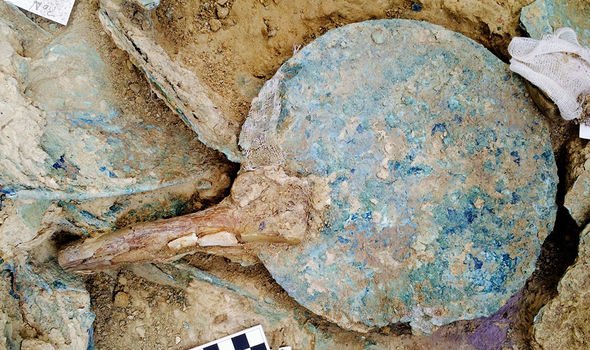
Director of the American School of Classical Studies at Athens, Dr James Wright, added that the grave lies “at the heart of the relationship of the mainland culture to the higher culture of Crete.”
He added that it will help scholars understand how the state cultures that developed in Crete were adopted into what became the Mycenaean palace culture on the mainland. Dr Wright noted: “Perhaps we can theorise that this site was that of a rising chiefdom.”